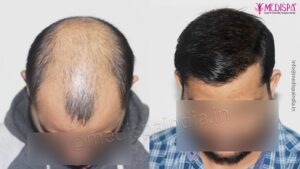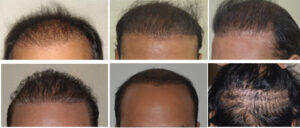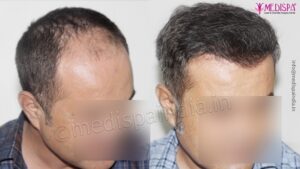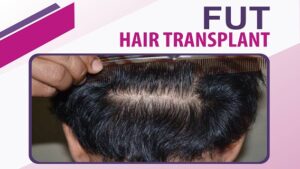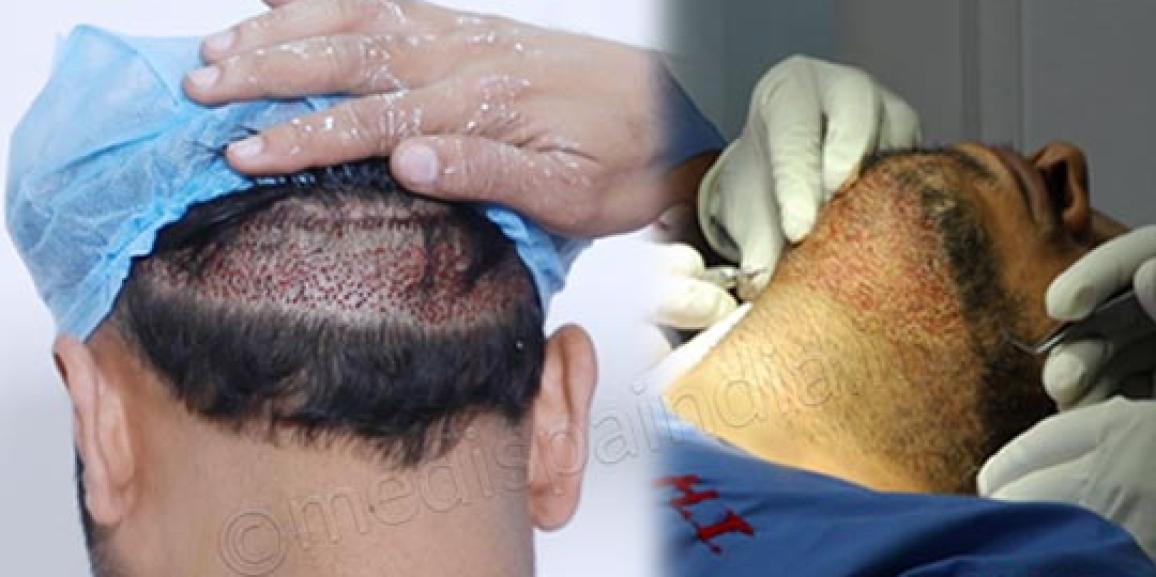
Knowing how the hair transplant procedure works will enable you to make an informed decision and know what to expect.
In addition to hair transplant being the greatest solution for your hair loss, there are some restrictions and issues with the surgery that you should be aware of. For your better knowledge of the hair transplant procedure, we have below described the extremely delicate “donor area” and “recipient area” of the procedure.
Hair transplantation
Hair grafts are harvested from the donor area and then transplanted to the desired bald area during a hair transplant, which is a minimally invasive surgical technique. Depending on the needed hair density and the hair transplant technique, the process could take anywhere from 4 to 9 hours. The FUT and FUE techniques are used for hair transplantation, and they both have different harvesting processes.
Two fundamental methods are used to execute the hair transplant procedure:
- FUT (Follicular Unit Transplantation, often known as the strip technique): This procedure includes collecting grafts in the form of a thin, suitable-width strip, followed by their separation under a powerful microscope. After graft harvesting, the recipient area is the site of implantation.
- FUE (follicular unit extraction): This technique uses a surgical tool with a range of diameters to harvest individual grafts, which are then implanted.
With the proper use of the donor area, “Medispa centres” for hair transplant in Jaipur and Delhi have effectively produced good outcomes in patients. At medispa, we uphold the highest levels of service, hygiene, and safety while utilising cutting-edge technology to produce the greatest results at a reasonable price.
In his more than 17 years of practise, Dr Suneet Soni, chief surgeon at the Medispa clinic, has performed more than 10000 hair transplants. He is a pioneer in the treatment of pattern baldness. His exclusive method of carefully choosing each and every phase of the hair transplant procedure enables him to produce the greatest outcomes with a natural appearance at a reasonable hair transplant cost in Jaipur.
What is donor and recipient area?
The place from which the hair roots are removed is known as the donor area in a hair transplant. Through FUE or FUT hair transplantation, the hair is harvested.
The area where the hair roots are put into the slits is known as the recipient site in a hair transplant. Hair roots are transplanted through incisions or channels made in the recipient area.
Donor area and its selection
It’s important that the donor areas have enough hair follicles to provide sufficient covering because your hair will be harvested during the hair transplant procedure. Having sufficient hair density in the donor areas to meet the requirements for being a good candidate is the surgery’s most crucial necessity.
The most frequently used donor sites are the sides and back of the head, followed by all other body hairs save the scalp. The rationale behind choosing the donor site is that only DHT resistant hair grafts—which lack androgenic hormone receptors—are hand-selected for harvesting.
These hair grafts do not change as a result of the action of androgenic hormones. We may expect that these hair transplants will be permanent. Thus, we can guarantee that hair transplantation results in outcomes that are completely natural-looking and permanent.
Permanent hair roots are known as safe donor sites, and these are the locations that should be specifically picked for the harvesting of the hair grafts.
Role of safe donor area in hair transplantation
When doing a hair transplant successfully, the safe donor site should be carefully selected. The purpose of the safe donor locations in hair transplantation is described as follows:
- The survival percentage of the hair grafts is higher: The hair transplants must endure for there to be the highest level of hair density. Each surgery is carried out with amazing precision, which boosts the longevity of the results by ensuring that the hair transplants sustain the least amount of damage. Each stage is completed with expert hands and close monitoring to increase the number of hair transplants that survive the process. A successful hair transplant depends on a combination of other factors and careful donor area selection.
- Long term results can be achieved: Since only permanent hair roots are transplanted in the selected bald spot after the hair transplant procedure, the results are long-lasting. Before the hair transplant, the initial consultation is a crucial phase in which the donor areas are thoroughly examined to ensure the specific harvesting from the safe donor area, which if not followed could have a detrimental effect on the durability of the results.
- Donor site preservation: The donor site that was selected for the surgery should be preserved in order to maximize the advantages of the hair transplant. Protecting the safe donor area is crucial, as is avoiding overharvesting, which could have a negative impact on the outcomes
- Depletion of the donor area: If the donor area is overharvested, the density of the donor hair will decrease, which could lead to unsatisfactory hair transplant outcomes. If the operation is completed in a single session with no possibility of repeat visits, the operation’s long-term advantages, particularly those for the donor area, may be in dispute.

